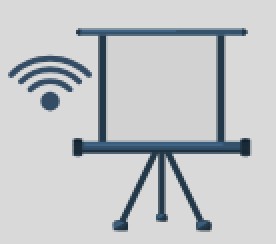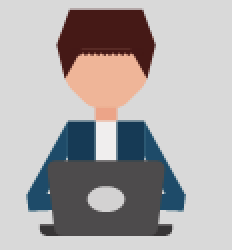 |
Effective and efficient teams are a crucial component of successful MTSS implementation, and to that end, putting together the right team and setting it up for success is one of the first steps of this work. Please read below for more information about the different school and district teams that support MTSS implementation, selecting team members, and planning for success. |
|---|
School and District Teams
Both participating schools and districts will need to create teams when undertaking MTSS implementation. These teams will ultimately both be working towards the same goal - streamlined implementation of a multi-tiered system of support by consistent use of data to inform and guide problem-solving efforts. The district and school teams, however, will look a little different.
School Teams
Schools will typically need two teams. The first is a team charged with school-wide improvement, meaning core instruction for behavior, academics, and social-emotional learning that all students receive. This team reviews school-wide data, such as screening scores, attendance, Office Discipline Referrals, and other school-wide measures of Tier 1 success. At this level, student names are not used, as the concern is: "How effective is what we're doing for all students?" The second school-based team is focused on providing and intensifying interventions to those students who need additional support, such as a targeted group intervention or an individualized, intensive intervention. Teams tasked with improving Tiers 2 and 3 focus on providing evidence-based interventions for students with academic, behavioral, and social-emotional needs for whom Tier 1 is not sufficient. Like the Tier 1 team, this team also reviews data frequently to determine criteria for entry into and exit from an intervention, progress monitoring, and evaluate the overall effectiveness of an intervention.
District Teams
The district team comes together frequently to monitor and streamline MTSS implementation and think broadly about areas of focus for the district. The district team plays a key part in building consensus and commitment for MTSS implementation across the district, as well as promoting and supporting scale-up and sustainability. The district team also makes determinations about what should be considered a “cabinet “ level decision – one that the district team should make to ensure consistency across schools, such as what norms will be used for academic screening, as well as what is considered a “building” level decision – one that school teams and/or the administrator make, such as a building schedule, as a team.
Selecting Team Members
Selecting the right people to be on the team is of the utmost importance. When assembling the teams needed for MTSS implementation, the following must be considered:
Planning for Success
Research shows that the efforts of an effective team can result in higher success with implementation - new implementation efforts were 80% effective over three years with a team (Fixsen, Blase, Timbers, & Wolf, 2001) vs. 14% effective over 17 years without a team (Balas & Boren, 2000). There is a substantial return on investment with an effective team, but just what makes a team successful? The practices listed below are critical factors in team success.
 |
Adequate time: This includes regular (at least monthly) meetings to come together and discuss the work, although a lot of work happens between meetings. These meetings should be scheduled in advance so that team members can plan accordingly to attend. |
|---|---|
 |
Norms: Teams with agreed-upon and established norms know what's expected of them as members and can be successful in meeting those norms. Common norms may include starting and ending on time, using technology responsibly, and sharing action steps. |
 |
Location & Technology: Teams should meet in an agreed-upon location that is accessible and conducive to work. Many teams use Google applications to work in real-time, so locations should have WiFi and/or a projector to make sure everyone can see. |
 |
Note-taking: Teams will need to have a clear record of what was discussed at each meeting. To this end, 1-2 team members will serve as note takers and capture the big ideas of each agenda item and any follow-up action steps. |
 |
Action Planning: Meetings are necessary to come together, but work must take place between meetings. Action steps will be created and assigned with due dates, and all team members are expected to take on a fair share of the tasks put forth |
